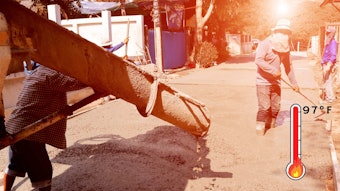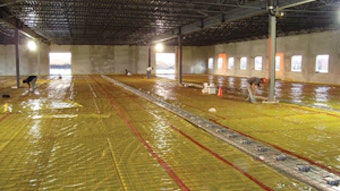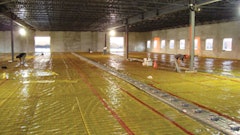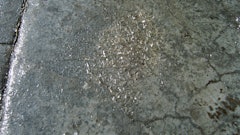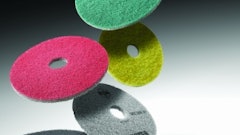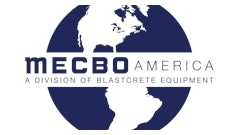
The dynamic nature of construction work challenges contractors to help identify and reduce jobsite safety issues along with work-related health problems. Running a safer and healthier jobsite is not only better for your onsite workforce, it’s better for business.
Employees respond positively to genuine commitments to improving the health and safety culture. Business leaders who take an active role in executing effective safety strategies can expect a more engaged workforce, which leads to quicker adoption that can measurably reduce injuries and downtime. Health and safety concerns are at the forefront of Hilti innovation — you don’t have to sacrifice power and performance for the health and safety of you and your crew.
COMMON PAIN POINTS TO TACKLE
Most injuries stem from risky working conditions and can be categorized by these common root causes.
People
Includes human error and risky or reckless behavior; misuse of tools or PPE; lack of knowledge or experience; inattention; working under the influence; and misjudgment of risk
Example: Lifting heavy loads is the most common cause of musculoskeletal disorders such as joint, bone, sprain, strains, and nerve injuries1.
Tools
Includes damaged or poorly maintained equipment leading to defects; missing or improper use of PPE; missing safety accessories; and using improper, worn, or damaged inserts
Example: A damaged or overused grinder disc can break unexpectedly, sending pieces flying. This is even more dangerous if the guard is missing.
Organization
Includes missing or improper PPE; inadequate training or certification; inattention to hazards and ergonomic risks such as discomfort and fatigue; and inadequate planning leading to rushing
Example: Overexposing employees to vibrating tools that drill, chisel, break, or grind can lead to operator discomfort and fatigue2.
Environment
Includes poor lighting; excessive noise; distractions; poor weather conditions or extreme temperatures; hazardous substances such as dust or chemicals; and working at heights or overhead
Example: Drilling concrete can create dust particles that can damage the respiratory system3. Risk increases when working on ladders: falls are the leading cause of death on jobsites4.
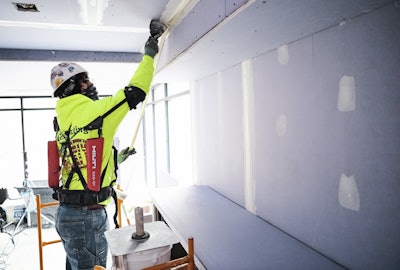
Effective solutions from Hilti can help protect your workforce and reduce risk on the jobsite—making sure you’re staying more productive.
HELP REDUCE WORKER STRAINS AND FATIGUE
- Power tools with vibration reduction technology such as Active Vibration Reduction (AVR)
- Tool-connected mobile apps that provide trigger-time recommendations as well as dust and noise ratings
- Lighter, more ergonomically friendly, and comfortable tools and systems like the EXO-O1 exoskeleton
- Automated machines like the Jaibot drilling robot for strenuous or repetitive tasks
- Rig-mounted wet diamond drills with automatic feed
ADDRESS ORGANIZATIONAL DEFICIENCIES
- Tool-connected mobile apps that provide on-demand safety training modules
- Hilti ON!Track asset management software for tracking worker qualifications and certifications; providing tool maintenance alerts; enabling transparency into PPE stock availability; and activating smoother repair or replacement of damaged tools
HELP PREVENT HAZARDS
- Laser measuring tools to help reduce ladder use
- Tool tethering to help prevent dropped tools
- Battery state-of-health alerts
- Battery-powered cordless tools that don’t require combustible fuel
HELP REDUCE DUST
- Tool-integrated dust removal systems that extract virtually all dust from the source
- Hollow drill bits that integrate better with dust extraction systems
- Powerful cordless vacuum cleaners for more convenient extraction and cleanup
- BIM processes that identify ways to avoid drilling (e.g., by specifying cast-in anchors)
ADDRESS HIGH-RISK TASKS AND BEHAVIOR
- Torque-control technology that helps prevent stuck tools from uncontrolled spinning such as Active Torque Control (ATC)
- Dead-man and touch-activated switches for stopping tools when the user lets go
By adopting a health and safety strategy, taking advantage of technological innovations, and investing in products and services that help reduce jobsite risk, you’re helping enable a safer and healthier jobsite and workforce while protecting your bottom line. Hilti offers the solutions, support, and expertise to help your business achieve your health, safety, and business goals
Click to learn more about Hilti’s health and safety innovations.
1“Prevention of Muscoskeletal Disorders in the Workplace.” https://www.osha.gov/ergonomics
2 “Recommended Practices for Health and Safety Programs: Hazard Identification and Assessment.” https://www.osha.gov/safety-management/hazard-Identification
3 “Protecting Workers From Silica Hazards in the Workplace.” https://www.osha.gov/silica-crystalline/health-effects
4 “OSHA’s Fall Prevention Campaign.” https://www.osha.gov/stop-falls

